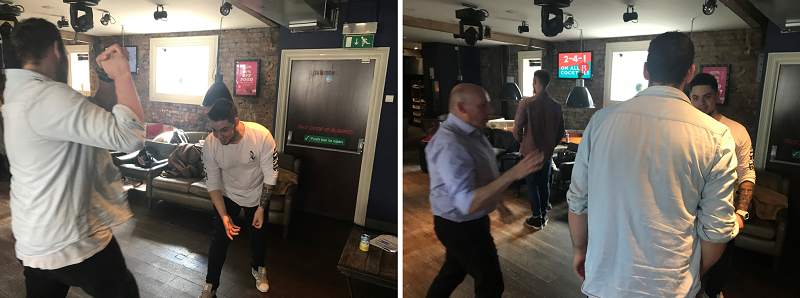Door security staff are renowned for being able to hold their own, prevent trouble and step in to break up fights.
But there are limitations to the role. As with most professions, door work is governed by an industry body (in this case the Security Industry Authority, widely referred to as SIA). There’s also a right and wrong way to go about it.
Very often door security staff are given a bad rap and there’s been many a news story over the years about bouncers overstepping the line. Interestingly, figures recently released by West Yorkshire Police have revealed that the number of attacks by door staff in Kirklees pubs and clubs has doubled.
Published in response to a Freedom of Information request, the stats showed that the number of assaults by door staff doubled from six to in 2015 and 2016 to 12 last year.
What’s more, during the same three-year period, a total of 24 incidents were recorded – 15 of these assaults resulted in members of the public being injured. A further four incidents in 2017 were more serious assaults, categorised as ‘intent to cause serious harm.’
An incredibly fine line exists between what door security staff are and aren’t legally permitted to do when protecting themselves and those around them. Unfortunately, the lines can easily become blurred in the heat of the moment.

Practical training carried out by GoodSense with Revolution Bar staff
As leading conflict management and physical intervention training specialists, we teach door security staff across the country how to carry out their work legally in line with the latest SIA standards, which includes:
Explain good Door Security:
- What ‘reasonable force’, ‘necessity’ and ‘proportionality’ mean
- The impact legislation and guidance has on their work
- What should happen after an incident in terms of reporting and support
Identify Door Security Intervention:
- The control measures that reduce the need for physical intervention
Describe Door Security Factors:
- The factors that increase the likelihood of physical intervention being required
- The factors that may increase the risk of injury
- How to reduce the risks associated with physical intervention
- Non-physical methods that can be used to pre-empt or defuse conflict
- The principles of disengagement and physical intervention
Demonstrate physical Door Security skills:
- Methods to protect themselves/others from assault
- How to disengage from grabs and holds
- A method to rescue a person from a strangle hold
- How to physically prompt and guide a person
- A non-restrictive standing hold that can be used as an escort
- Non-restrictive methods to manage behaviour in seated positions and on the floor
The points listed above are only a small piece of the picture. They’re what door security staff learn about when they attend our Accredited Level 2 Intermediate and NFPS Award in Disengagement and Non-restrictive Physical Intervention Skills (QCF) – Security course.
There’s other training that door staff can attend too, such as SIA 5 Day, as well as more specialised courses, such as the BTEC level 2 Award in Safe and Effective use of restraint equipment (Handcuffing Qualification).
However, while the agendas may be different for these different courses, there’s one key learning at the heart of them all, and that’s physical intervention and conflict management should only ever be used as a last resort.
For more information or to discuss your physical intervention or conflict management training requirements with us, contact us on darren@good-sense.co.uk or 0845 576 0035.
Recent Comments